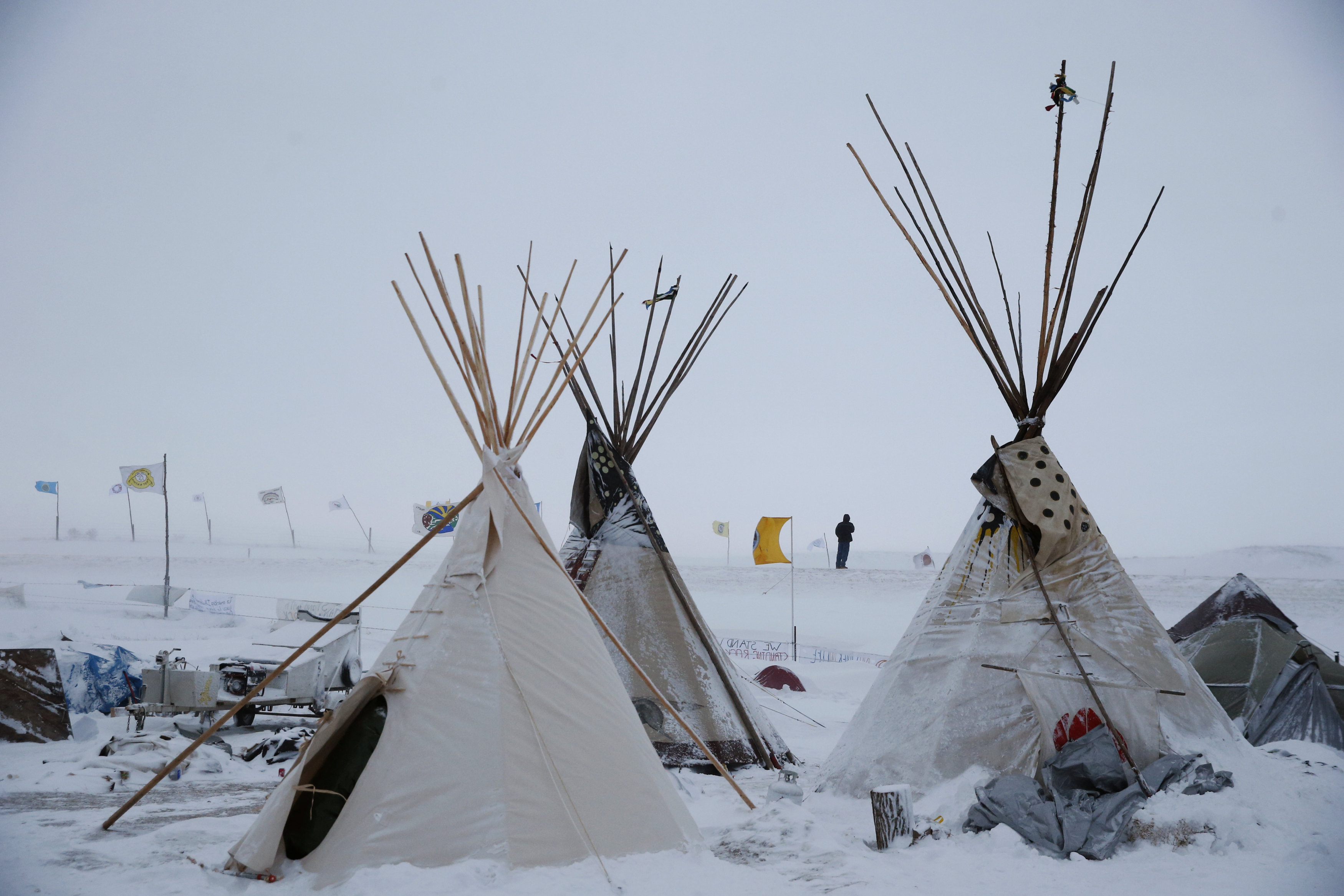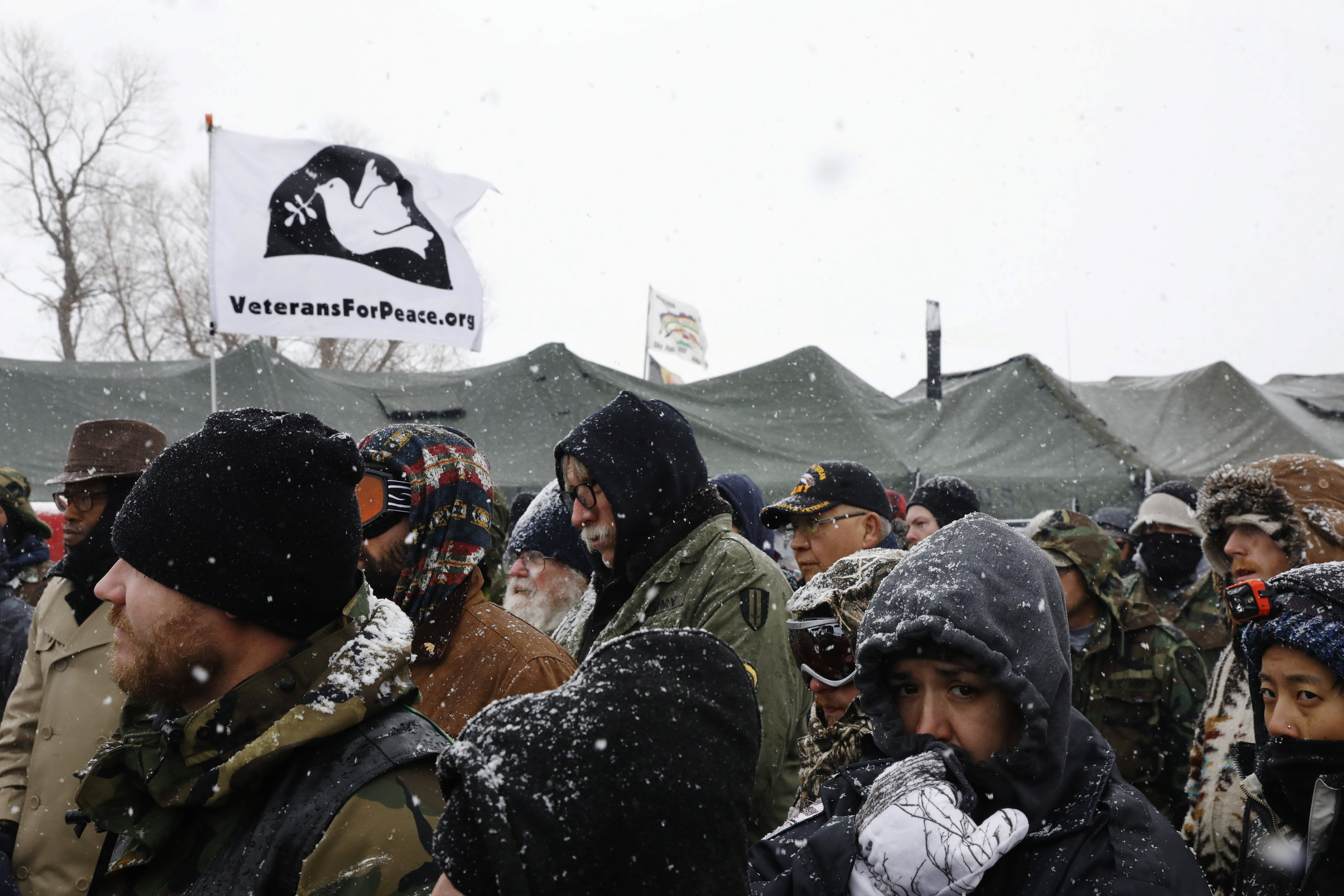
By Valerie Volcovici
WASHINGTON (Reuters) – Thousands of Native American demonstrators and their supporters marched to the White House on Friday to voice outrage at President Donald Trump’s support for the Dakota Access and Keystone XL oil pipelines, which they say threaten tribal lands.
The protest follows months of demonstrations in a remote part of North Dakota, where the Standing Rock Sioux tribe demonstrated in an attempt to stop the Dakota Access Pipeline crossing upstream from their reservation.
That pipeline is being installed now, after Trump signed an executive order last month smoothing the path for construction. He also cleared the way for the Keystone XL project that would pipe Canadian crude into the United States.
The protesters, some wearing traditional tribal garb, carried signs reading “Native Lives Matter”, “Water is Life”, and “Protect the Water” while marching.
A White House official did not immediately respond to a request for comment.
“You stood with us at Standing Rock and now I ask you to stand with our indigenous communities around the world,” Dave Archambault, the chairman of the Standing Rock Sioux, said at the rally.
Among Republican Trump’s first acts in office was to sign an executive order that reversed a decision by the previous administration of Democratic President Barack Obama to delay approval of the Dakota pipeline, a $3.8 billion project by Energy Transfer Partners LP.
The Standing Rock Sioux and the Cheyenne River Sioux lost a legal bid to halt the construction of the last link of the oil pipeline under Lake Oahe in North Dakota. The pipeline is due to be complete and ready for oil by April 1.
At the rally, Archambault’s remarks were interrupted intermittently by both supportive cheers and boos from people who shouted that he “sold out” protestors by allowing the main anti-pipeline protest camp, Oceti Sakewin, to clear out.
“I don’t care what you guys say and it’s ok for you to be upset,” Archambault said in response. “But the real thing is we are here for our youth and here for our future.”
Protest organizers erected tipis on the National Mall to represent the camp. Oceti Sakewin was populated by protesters for months, who at times clashed with law enforcement officers.
Opponents of the Dakota Access pipeline have vowed to keep up protests against pipelines.
(Reporting By Valerie Volcovici; Editing by Richard Valdmanis and Grant McCool)



